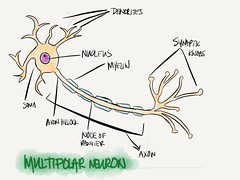Study Guide Nervous System Biology
- P fairy queens 1 paperback june 19 2013 biology 12 the nervous system study guide 1 explain how the nervous system is divided into sub systems what.
- Explain how the structure of the nervous system relates to the ways animals interact with their environment. AP Biology Study Guide.
Anatomy Study Guide Nervous System
STUDY GUIDE 8 1.Divisions of the Nervous System 1). Anatomy & Physiology with Integrated Study Guide. 4.Protection for the Central Nervous System.
The central nervous system receives and processes information from the senses. The brain and the spinal cord make up the central nervous system.

Both organs lie in a fluid called the cerebrospinal fluid, which cushions and nourishes the brain. The blood-brain barrier protects the cerebrospinal fluid by blocking many drugs and toxins. This barrier is a membrane that lets some substances from the blood into the brain but keeps out others. The spinal cord connects the brain to the rest of the body.
It runs from the brain down to the small of the back and is responsible for spinal reflexes, which are automatic behaviors that require no input from the brain. The spinal cord also sends messages from the brain to the other parts of the body and from those parts back to the brain. The brain is the main organ in the nervous system. It integrates information from the senses and coordinates the body’s activities. It allows people to remember their childhoods, plan the future, create term papers and works of art, talk to friends, and have bizarre dreams. English praxis ii study guide. Different parts of the brain do different things. Damage to the Spinal Cord The spinal cord is what connects the brain and body, and it is protected by the bones in the spinal column.
Injuries to the spinal cord can cause serious problems, such as paralysis. Even relatively minor damage to the spinal cord can cause loss of feeling in parts of the body, impaired organ function, and loss of muscular control. Though spinal cord injuries are usually permanent, current research into regenerated axons and stem cells offers hope that one day these injuries may be treated successfully.
A network of neurons One-celled creatures like don’t have neurons, because they can communicate within themselves through the use of, but all multicellular animals do have neurons. The simplest and earliest example of neurons is in, which evolved around. In hydras, neurons are not organized into nerves, but just spread randomly throughout the body in a nerve net. Beginning with, about, the neurons were twisted together into long nerves to reach every part of the body. A neuron is a specialized kind of cell that usually has a long, thin axon at one end (some are more than a meter long) and dendrites at the other end.
Endocrine System
Neurons use or chemical changes to send messages from the end of one neuron’s axon across a gap called the synapse to the dendrites of the next neuron in the chain. Different kinds of neurons do different things. Some neurons respond to heat and cold, others to touch, or sound, or light. Different neurons react if you are tickled, or if you are itchy. Other neurons pass messages the other way, from the brain down to the muscles. When you do something over and over, like practice the piano or kick a ball, the neurons responsible for that movement grow stronger connections to each other, and the message passes faster and more accurately. Soon you can tie your shoes or ride a bike without thinking about it.

Neurons don’t use to make new neurons. Instead, another special kind of cell, glial cells, can turn into neurons as needed. Children make new neurons as they grow, but even adults still make lots of new neurons inside their brains. Bibliography and further reading about neurons.